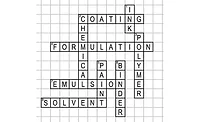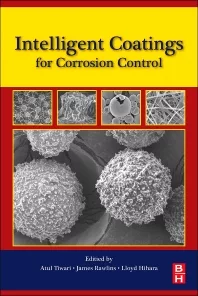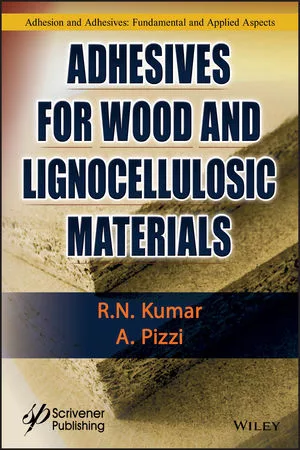Bacterial Hygiene Problems An Antimicrobial Solution for Clean Up
The facile reaction of DBNPA with microbially important, sulfur-containing nucleophiles such as glutathione or cysteine is the basis of its mode of antimicrobial action; it is not classified as an oxidizing or halogen-releasing biocide. Unlike typical thiol-reactive biocides, its action is such that thiol-based amino acids like cystiene and penicillamine are oxidized beyond the formation of disulfide species.5 By irreversibly disrupting the function of cell-surface components, transport across cell membranes is precluded, and key biological functions are inhibited. DBNPA offers an advantageous combination of rapid degradation to relatively non-toxic end products, and even faster microbial kill at low ppm concentrations.
DBNPA, when formulated as a 20% solution in water and polyethylene glycol (DOWICIL QK-20), is completely miscible with water and readily disperses upon introduction into a waterborne system. The DBNPA molecule begins functioning as an antimicrobial agent immediately upon introduction into a system; the rate of this activity is not affected by pH, and antimicrobial control is usually achieved before complete degradation occurs. The combination of instantaneous antimicrobial activity and rapid chemical breakdown makes DBNPA both a cost-effective and environmentally friendly biocide.
"Quick-Kill" Biocide
These two complementary properties can be exploited when DOWICIL QK-20 is used as a quick-kill biocide and short-term preservative in water-containing systems that require microbial control. For example, the biocide is ideally suited for treatment of wastewater generated during the manufacture of paint. Paint manufacturers routinely recycle and store paint process/wash water to use as make-up water in future batches of paint. As paint companies have become more conscious of their water use, they are discarding less and less during the manufacturing process. In the last 10 years, the National Paint & Coatings Association has recognized many paint manufacturers with Pollution Prevention Awards, honoring the companies' outstanding efforts to protect the environment. The collection and reuse of all wash water used to rinse paint-mixing vats has been emphasized as crucial to achieving environmentally responsible production. This wash water contains a high concentration of paint solids and is usually heavily contaminated with microorganisms; it must be decontaminated prior to its re-introduction into the paint-making process. This biocide quickly and economically reduces microorganism counts in the wash water, preparing it for re-entry into the production cycle.
A seven-day study examining the effectiveness of DOWICIL QK-20 in paint wash water determined that concentrations as low as 250 ppm (50 ppm as active DBNPA) controlled microorganism growth for the duration of the test. The process water samples arrived in the laboratory contaminated, with organism counts of 3.3 x 104 CFU/mL. Fifty-gram samples were weighed into screw-cap jars and treated with DOWICIL QK-20 (50, 125, 250, 375 or 500 ppm as product). An additional, untreated sample was used as a control. Samples were streaked on Tryptic Soy Agar plates at the start of the study and again after four hours, 24 hours, 48 hours, four days and seven days. Biocide concentrations of 50 and 125 ppm did not reduce the bacterial population over the course of the study. Concentrations of 250 and 375 ppm reduced the contamination to below the level of detection in four hours; a concentration of 500 ppm required only an hour for the same reduction. A minimum concentration of 250 ppm DOWICIL QK-20 was required to maintain bacterial control for seven days (see Figure 1).
Short-Term Antimicrobial
Most waterborne household and industrial products, ranging from laundry detergents to adhesives, are formulated with a preservative to maintain quality for the life of the product. The final formulation should be free of dangerous contamination upon packaging and is expected to remain preserved for a period of time despite repeated microbiological insults. Contaminated raw materials, such as surfactants, latex or mineral slurries, may stress the preservative system in the final formulation, though, resulting in spoiled or otherwise adulterated product. Mathematical models predict that solutions of this biocide will work effectively in systems where biocidal activity is required only briefly (hours rather than days or weeks). Because the initial, instantaneous demand for DOWICIL QK-20 may be considerable, it provides only short-term biocidal activity in heavily contaminated systems. It therefore effectively decontaminates raw materials prior to their introduction into a formulation without disrupting the chemical balance of the final product. Longer-term preservation, however, may require the introduction of a slower-acting preservative after decontamination of the material with DOWICIL QK-20.A seven-day study where DOWICIL QK-20 (50, 100, 200, 300, 400 and 500 ppm as product) was used to treat an aqueous surfactant solution contaminated with microorganisms (1.8 x 105 CFU/mL) indicated that significant reductions in the organism population were observed with relatively low biocide concentrations. This study was conducted using the same protocol as that described for the study with the paint wash water samples. A DOWICIL QK-20 concentration of 200 ppm (40 ppm active DBNPA) in the contaminated surfactant solution dropped organism counts to below the detectable limit within 48 hours and maintained the integrity of the solution for the entire seven-day study. A slightly higher concentration, 300 ppm (50 ppm active DBNPA), reduced organism counts to below the detection limit within 24 hours and controlled the organism population for the duration of the study (see Figure 2). Similarly, treatment with DOWICIL QK-20 reduced counts in contaminated latex (5.3 x 105 CFU/mL). A biocide concentration of 300 ppm effectively killed most of the microorganisms after 24 hours, while 500 ppm achieved the same goal after only five hours (see Figure 3).
When lower biocide concentrations are used in certain raw materials, like latex, microbial re-growth sometimes occurs. This re-growth is most likely the result of incomplete kill of the organisms already contaminating the material. An insufficient concentration of DOWICIL QK-20 will temporarily retard microbial growth, but rebound will occur as the DBNPA molecule breaks down to below an effective biocidal level.
This biocide also worked well in two different mineral slurries. In a neutral titanium dioxide slurry, a concentration of 125 ppm (25 ppm active DBNPA) reduced counts to below detection after 24 hours, and a concentration of 250 ppm (50 ppm active DBNPA) reduced counts to the same levels in less than two hours (see Table 1). Although an alkaline calcium carbonate slurry proved more challenging to decontaminate, a concentration of 400 ppm (80 ppm active DBNPA) achieved nearly a three-log reduction within 24 hours. The speed and persistence of this reduction was improved as the concentration of DOWICIL QK-20 was increased. For example, a concentration of 500 ppm (100 ppm active DBNPA) reduced counts within 24 hours and maintained the reduced counts for at least 48 hours (see Figure 4).
Preservative Enhancer
Once DOWICIL QK-20 has been used to clean up a raw material or a formulation, the reduced bioburden may alleviate some of the stress placed on an in-can preservative, allowing the preservative to work longer and more effectively at lower concentrations. The efficacy profiles of several commonly used in-can preservatives were examined to determine the effectiveness of DOWICIL QK-20 as a preservative enhancer.A surfactant-based formulation was treated with one of several in-can preservatives, either alone or in combination with DOWICIL QK-20. Preservatives tested included DOWICIL 75 (64% 1-(3-chloroallyl)-3,5,7-triaza-1-azonia-adamantane chloride or CTAC) and PROXEL GXL (19.3% 1,2-benzisothiazolin-3-one or BIT). The preserved surfactant-based formulation was then inoculated with a concentrated cocktail consisting of nine bacteria strains (~108 CFU/mL) and streaked on agar after three, six, and 24 hours. The matrix was inoculated an additional nine times with a more dilute, nine-bacteria cocktail (~106 CFU/mL) and streaked after 24 hours. Plates were incubated at 30¡C and read after 48 hours. Samples were inoculated only if the microbiological rating was 5 x 102 CFU/mL or less.
The activity of both CTAC and BIT was enhanced when used in combination with DOWICIL QK-20 (note: all preservative concentrations are given as product and have not been adjusted to account for the concentration of the active). CTAC (64% active) was effective at a minimum concentration of 1500 ppm, but when combined with 100 ppm of DOWICIL QK-20 (20% active), only 500 ppm was required for preservation. Similarly, a minimum concentration of 2000 ppm of BIT (19.3% active) was necessary when the preservative was used alone, but when used in combination with 100 ppm DOWICIL QK-20, only a concentration of 500 ppm was required to maintain preservation. In both cases, the use of DOWICIL QK-20 as a co-preservative resulted in comparable efficacy with considerably lower concentrations of the primary preservative (see Table 2).
Method of Addition to a Waterborne System During Formulation
DBNPA is currently available in a number of forms, including a crystalline solid of high purity, a tablet that releases the active ingredient slowly over time (SUMP BUDDY WT), and as a liquid formulation of 20 weight percent in water and polyethylene glycol (DOWICIL QK-20). Most paint formulators use the liquid product to treat recycled make-up water because this form of DBNPA is readily pumpable. Historically, the make-up water used in paint manufacture has been a source of significant microbiological contamination that can affect all parts of the paint-making process. DBNPA solutions are particularly effective in the decontamination of waterborne systems. The solution can be introduced into the system in two ways: either as a single slug dose or as a constant, continuously fed quantity. While the single, high-concentration dose will rapidly eliminate a large number of bacteria, the continuous presence of a lower DOWICIL QK-20 concentration will reduce any bioburden introduced by contaminated water or other raw materials, thereby improving the effectiveness of the primary preservative.References
1 Hesse, B. C., J. Am. Chem. Soc., 18, 725 (1896).2 U.S. Patent 2,419, 888 (1947).
3 Wolf, P. A. and Sterner, P. W., Appl. Microbiol., 24, 581 (1972).
4 Passman, F. J., Summerfield, J., et al., Lubrication Engineering, 56 (8), 26 (2000).
5 Dow Internal Technical Report.
Looking for a reprint of this article?
From high-res PDFs to custom plaques, order your copy today!









